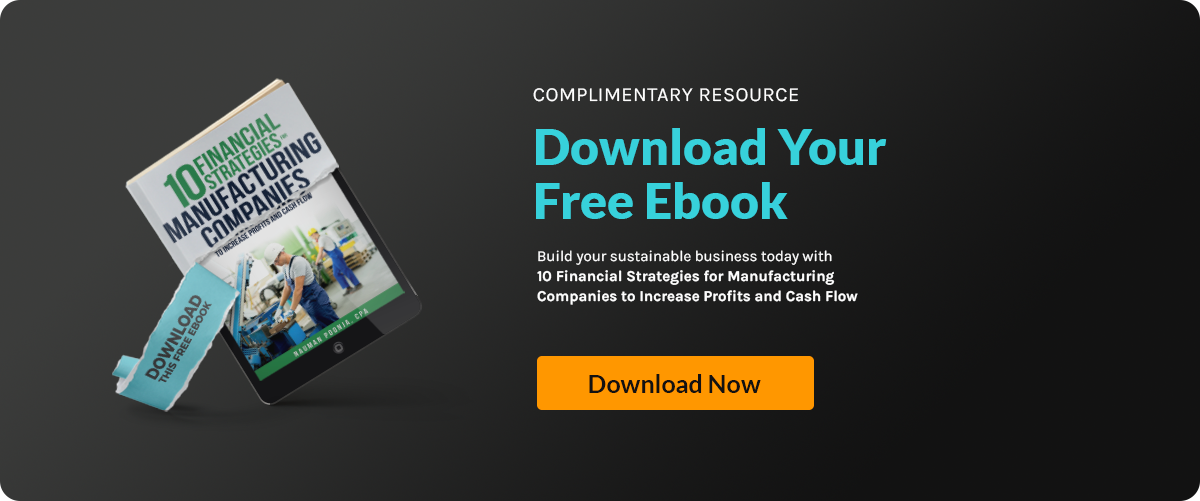A Manufacturing CEO’s Guide: Reading Financial Statements Like a CFO

Strong financial leadership begins with clarity—and few things reveal the true health of a manufacturing company like its financial statements. Yet, many owners and managers look at reports without understanding the story behind the numbers.To think like a CFO, you must learn how to read financial statements as decision-making tools, not just compliance documents. This guide breaks down how manufacturing CEOs and finance leaders can interpret these statements, connect the data, and use them to drive profitability and scalability.
Why Financial Statements Matter
Financial statements provide the pulse of your company. They show how efficiently you’re converting resources into profit, how much cash you have to operate, and where you can cut waste.
A CFO reads these statements not only to review history but to predict the future—identifying patterns that shape investment, pricing, and production strategy. Understanding this relationship is essential to long-term financial control and strategic growth.
The Three Core Financial Statements
1. Income Statement (Profit and Loss Statement)
The income statement reveals performance over a set period—your revenue, costs, and resulting profit. Every manufacturing CEO should be able to interpret a profit and loss statement line by line.
Key sections include:
- Revenue: The total amount earned from product sales.
- Cost of Goods Sold (COGS): The direct costs tied to manufacturing your products. Learn more in how to determine cost of goods sold in manufacturing.
- Gross Profit: Revenue minus COGS—an indicator of production efficiency.
- Operating Expenses: Administrative and selling costs not directly tied to production.
- Net Income: The bottom line—profit after all expenses, taxes, and interest.
CFOs don’t just look at total profit; they analyze why margins shift. Rising labor or material costs can erode profitability, while smarter resource allocation can improve it.
Understanding concepts like contribution margin and fixed vs. variable costs helps you see how production changes impact earnings.
2. Balance Sheet
The balance sheet shows what your company owns, owes, and retains. It’s the financial snapshot of your manufacturing operation at a single point in time.
Key components:
- Assets: Machinery, equipment, cash, and inventory.
- Liabilities: Outstanding loans, payables, and tax obligations.
- Equity: The company’s retained earnings and owner investment.
CFOs use balance sheets to evaluate liquidity, leverage, and overall financial health. A strong balance sheet supports growth and funding opportunities, while a weak one signals risk.
Learn to distinguish between tangible and intangible assets and how they influence valuation and borrowing capacity.
3. Cash Flow Statement
Profit doesn’t always equal cash. The cash flow statement tracks the movement of money through your business—operating, investing, and financing activities.
CFOs pay close attention to operating cash flow, which shows whether your core operations are generating or consuming cash.
For example:
- Increasing inventory without matching sales may reduce cash.
- Faster collections on receivables improve liquidity.
How a CFO Reads These Statements Together
Reading each report separately gives you information. Reading them together gives you insight.
For example, if your profit is up but cash flow is down, it may mean you’re booking revenue before collecting payments. If your balance sheet shows high debt, but your income statement shows steady profit, the CFO might prioritize debt repayment before new expansion.
This holistic view allows CFOs to see cause and effect—how operations, capital, and market conditions interconnect.
Connecting Ratios to Decisions
CFOs rely on financial ratios to interpret statements quickly and compare performance over time.
Important ratios for manufacturers include:
- Gross Margin: Gross Profit ÷ Revenue
- Operating Margin: Operating Income ÷ Revenue
- Current Ratio: Current Assets ÷ Current Liabilities
- Debt-to-Equity: Total Liabilities ÷ Shareholder Equity
- Inventory Turnover: COGS ÷ Average Inventory
Tracking these metrics over time reveals efficiency trends and potential red flags. Review guidance in business performance metrics for manufacturing companies to benchmark results effectively.
Common Red Flags CFOs Notice
-
Rising Costs Without Revenue Growth
This often signals inefficiencies in production or purchasing. Use cost optimization techniques to control material expenses. -
Shrinking Gross Margins
Indicates underpricing or rising variable costs. Address this using price and cost analysis in your supply chain. -
Negative Cash Flow
Suggests timing issues or overstocking inventory. Implement cash flow forecasting. -
Inconsistent Expense Reporting
Lack of standardized procedures can distort your financial visibility. Ensure clear workflows using a financial management control process. -
Weak Balance Sheet Liquidity
Too much short-term debt can strain operations. Consider strategic capital allocation for manufacturing to strengthen your position.
How CFOs Use Financial Statements to Drive Growth
1. Identifying Cost Drivers
CFOs study production data alongside financial statements to find where costs rise unnecessarily. Understanding labor and overhead cost allocation helps pinpoint waste.
2. Planning Expansion Strategically
They combine past performance data with forecasts to determine whether the company can fund new lines, facilities, or acquisitions. Learn about capital readiness in the role of capital planning for maximizing profitability in manufacturing.
3. Measuring Profitability Accurately
CFOs rely on detailed margin and cost-volume-profit analysis to ensure new contracts or product lines meet return expectations.
4. Supporting Compliance and Audits
Proper reporting builds transparency. Use frameworks from strong financial auditing process in manufacturing accounting to maintain credibility with lenders and regulators.
Using Data for Predictive Insight
A CFO doesn’t just review past numbers—they project future ones. Modern finance functions use rolling forecasts and financial KPIs to model best- and worst-case scenarios.
This data-driven forecasting helps answer key CEO questions:
- Can we afford to expand production?
- How much cash will we need next quarter?
- What pricing structure maintains margins amid rising costs?
Using predictive analytics transforms financial statements into management dashboards, not static reports.
Implementing CFO-Level Review Practices
To read financial statements like a CFO, build discipline around:
-
Monthly Review Cadence
Set routine review sessions. Compare results against budgets and forecasts. -
Variance Analysis
Investigate any gap between projected and actual performance. -
Cross-Functional Collaboration
Involve operations and sales leaders in discussions. This ensures context behind numbers. -
Continuous Improvement
Adjust forecasts, update cost models, and refine KPIs each quarter.
Building these habits aligns your leadership team with data-driven decision-making.
Practical Example
A mid-sized electronics manufacturer saw consistent sales growth but flat profit margins. A CFO-level review revealed rising input costs hidden within “other expenses.” By analyzing fixed and variable costs and conducting a margin analysis, they discovered inefficiencies in material procurement.
Adjusting vendor contracts improved gross margin by 7% within two quarters—proof that reading statements critically leads to actionable change.
Why CEOs Should Learn to Read Like CFOs
Understanding your financials at a strategic level allows faster, smarter decisions. CEOs who can interpret reports directly can:
- Anticipate cash flow needs before shortages arise.
- Spot operational inefficiencies early.
- Communicate effectively with investors and lenders.
- Lead with confidence backed by real financial insight.
Learning to read statements like a CFO bridges the gap between operations and strategy—something every manufacturing leader needs to sustain growth.
The Bottom Line
Financial statements are more than historical records—they’re strategic tools that reveal where your business stands and where it’s heading.
When you can interpret them like a CFO, you gain control over profitability, growth, and long-term value creation. The more fluent you become in your numbers, the clearer your path to sustainable success.
Want clearer financial insight for your manufacturing business?
Contact Accounovation to set up expert accounting support that helps you read, understand, and act on your financial data like a CFO.







